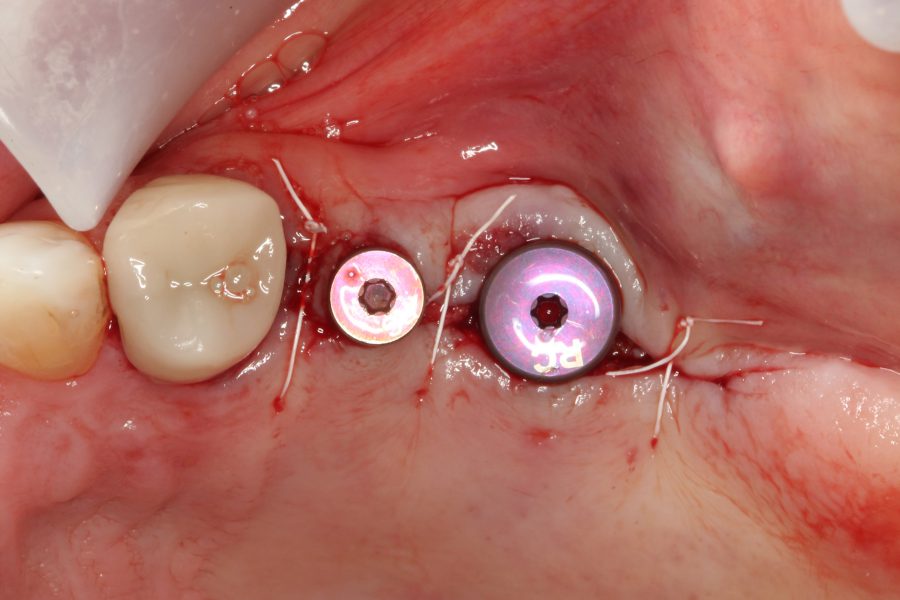IMPLANTS
Implant placement in the posterior upper jaw (maxilla) may not be readily possible in some cases due to insufficient bone height. In such cases, creating sufficient bone height may require a “lift” of the schneiderian membrane (sinus membrane) together with bone graft placement underneath it (between the floor of the sinus and the membrane that covers it). Through this procedure we are able to increase the available bone height for dental implant placement.
Depending on the additional bone height needed there are two types of procedures in order to lift the sinus membrane and graft the area of interest. The first procedure is called indirect sinus lift and it’s the procedure of choice when small to medium increase in bone height is needed. In this procedure sinus lift is being achieved through the osteotomy (the hole) that we prepare for our implant and the implant is being placed at the same time of the procedure.
The second type of procedure is the direct sinus lift and this procedure is being used when a medium to large increase in bone height is needed. A direct lift of the sinus membrane is facilitated through an intraoral opening of an access window on the lateral wall of the sinus. The membrane is then lifted over a more extensive area using membrane elevators and the space created is being packed with bone graft. Following that the access window is being closed using a collagen membrane. When indicated, implants may be placed simultaneous to the sinus lift procedure. Otherwise, implants are placed as a second stage procedure a few months following the sinus lift.
Both of the afore mentioned procedures are performed at a dental practice setting without the need for general anesthesia or IV sedation and in a completely painless manner using local anesthesia.


